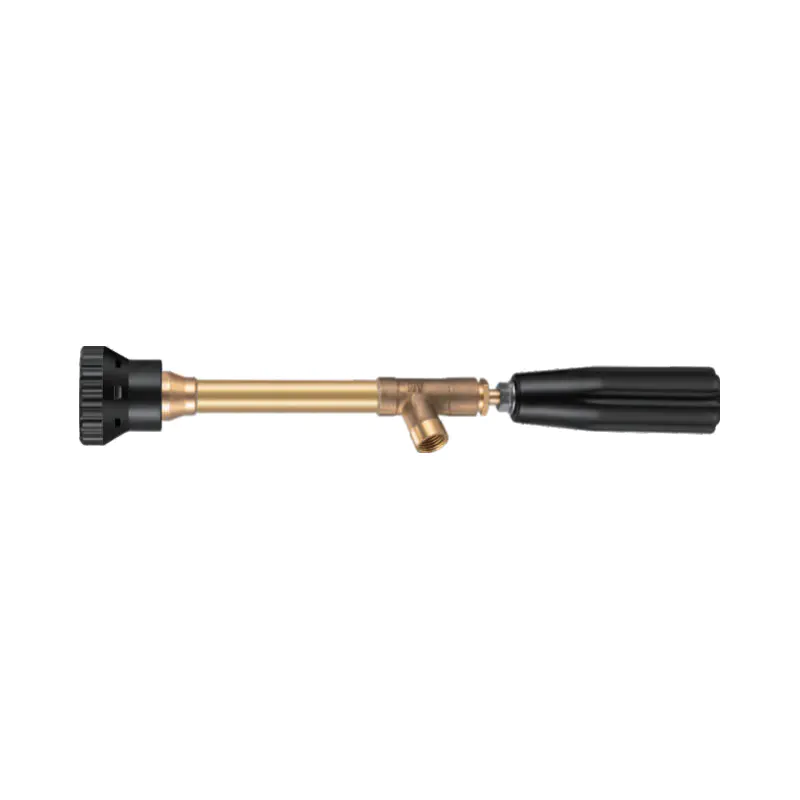This ordinary short windproof agricultural high-pr...
See DetailsIn the evolving agricultural machinery market, the design of spray guns plays a pivotal role in enhancing farmers’ productivity and comfort. The straight agricultural spray gun, a critical tool for pesticide, herbicide, and fertilizer application, is undergoing significant innovations—notably in lightweight design. This transformation addresses long-standing challenges of operator fatigue, maneuverability, and overall operational efficiency.
Conventional agricultural spray guns often weigh heavily, especially when paired with long hoses and large tanks. During extended spraying sessions, this weight can to considerable operator fatigue, reducing precision and speed. Fatigue also increases the risk of mistakes, such as uneven spraying or missed areas, which can impact crop health and yield.
Moreover, heavy spray guns limit maneuverability, making it difficult for operators to navigate tight spaces or cover large fields efficiently. These factors highlight the urgent need for lighter, ergonomically designed spray guns that support prolonged use without compromising effectiveness.
Manufacturers are now leveraging materials such as high-strength plastics, aluminum alloys, and composite fibers to significantly reduce the weight of straight agricultural spray guns. These materials offer durability and corrosion resistance, crucial for handling aggressive chemicals and harsh outdoor environments.
For example, replacing traditional steel components with reinforced polymers can reduce the overall weight by 20-40%, without sacrificing structural integrity. Aluminum parts offer a lightweight alternative with strength-to-weight ratio, providing long-lasting performance under demanding conditions.
In addition to material improvements, ergonomic design features have been integrated into lightweight spray guns. Adjustable handles, balanced weight distribution, and anti-slip grips help minimize strain on the operator’s hands, wrists, and arms. Some models incorporate cushioned or shock-absorbing handles to further reduce vibration transfer during spraying.
These design enhancements not only reduce physical stress but also enable operators to maintain a steady hand for more precise chemical application. The improved grip and comfort allow for longer spraying periods with fewer breaks, ultimately boosting productivity.
Impact on Reducing Operator Fatigue
Lightweight straight agricultural spray guns drastically reduce the effort required to hold and maneuver the tool. This reduction in physical demand lowers muscle fatigue and joint discomfort, enabling operators to work longer hours with less exhaustion. For large-scale farms where spraying may take many hours over several days, this improvement translates directly into better operational efficiency and reduced labor costs.

Furthermore, by decreasing fatigue, operators maintain better concentration and control, to more uniform spraying patterns. This precision protects crops from over- or under-application, enhancing crop yield quality and reducing chemical waste.
Boosting Operating Efficiency
Beyond user comfort, the lightweight design of modern spray guns contributes to faster and more effective spraying operations. Lighter equipment allows for quicker repositioning between plants or rows, reducing downtime. Operators can also react more swiftly to changing field conditions, such as wind shifts, to ensure targeted application.
Additionally, many manufacturers integrate advanced nozzle systems and adjustable spray patterns with these lightweight guns. This combination offers versatility to cover different crop types and spraying needs while chemical consumption. The result is a highly efficient application process that maximizes resource use and environmental impact.
Technological Integration and Future Trends
Some next-generation straight agricultural spray guns now incorporate smart technologies, such as flow rate sensors and Bluetooth connectivity, allowing real-time monitoring and adjustments. Paired with lightweight ergonomic designs, these innovations support precision agriculture practices that improve sustainability and crop management.
Looking ahead, continued advancements in materials science and industrial design are expected to further reduce the weight of spray guns while enhancing durability. Innovations like 3D-printed components and nano-coatings may soon emerge, offering even greater resistance to wear and chemical exposure.